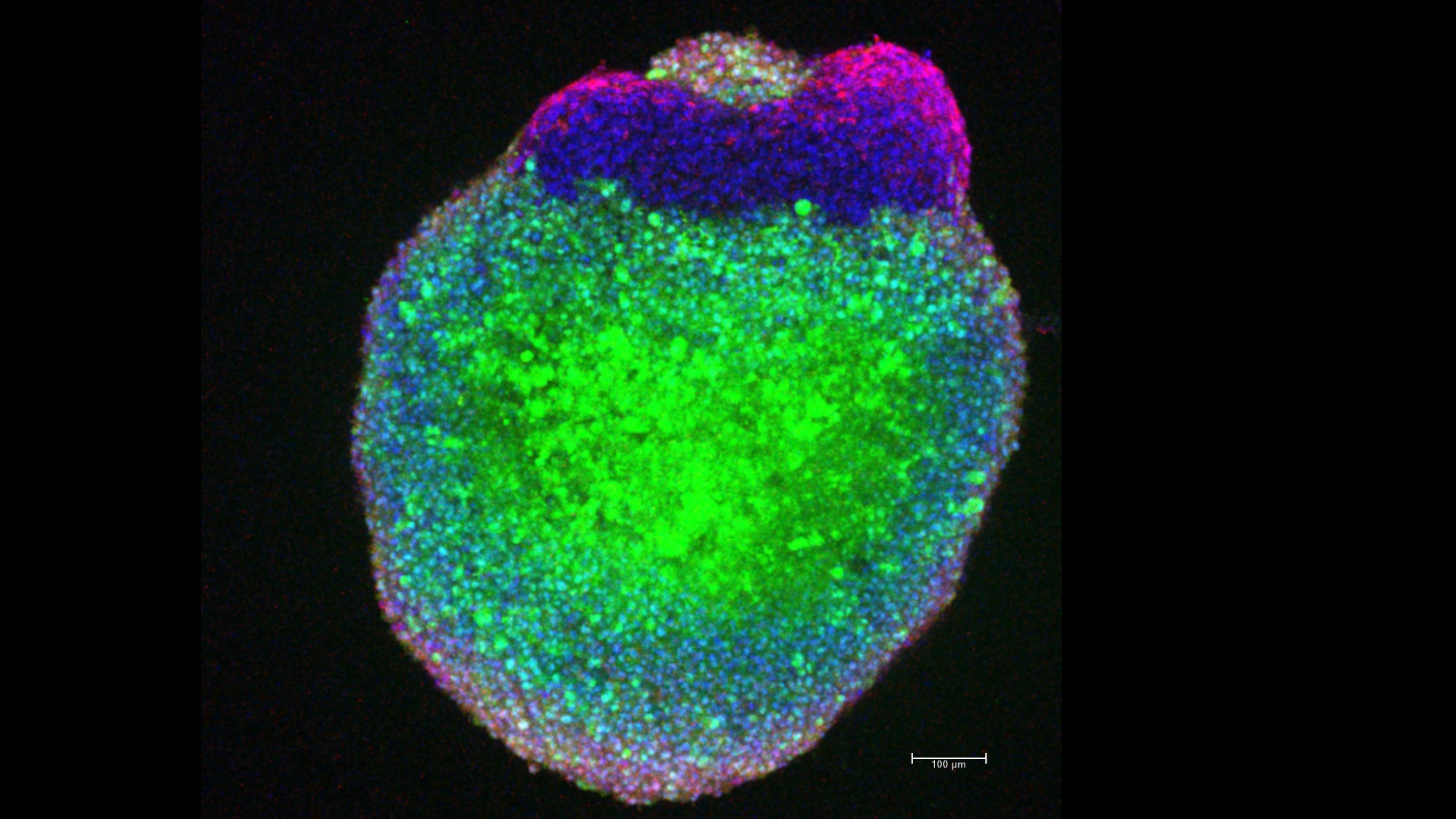About RePark
Overview
Neurological disorders are the leading cause of disability worldwide. Within the degenerative subset, i.e., neurodegenerative disorders (NDs), the most common ones are age-related and gaining prevalence due to the increase in life expectancy. Parkinson disease (PD) is the second most common ND, affecting, apx. 10 million people. PD generates deficits in movement and not directly in cognition. The most common therapies are still based on minimizing the symptoms, while there is no efficient therapy to postpone its onset, or revert its progression. This is a common problem in NDs that is partially related with the difficulty of reaching the affected regions of the brain, as the blood-brain barrier (BBB) blocks the passage of most of the drugs.
RePark project will develop an in vitro PD model able to mimic the BBB, while recapitulating the major biological/biochemical hallmarks of the disorder.
The Repark project is led by 3B’s Research Group from University of Minho. University of Minho partners with internationally leading research institutions: EU partner - University of Antwerp (UA) and non-EU partner - Tel Aviv University (TAU).
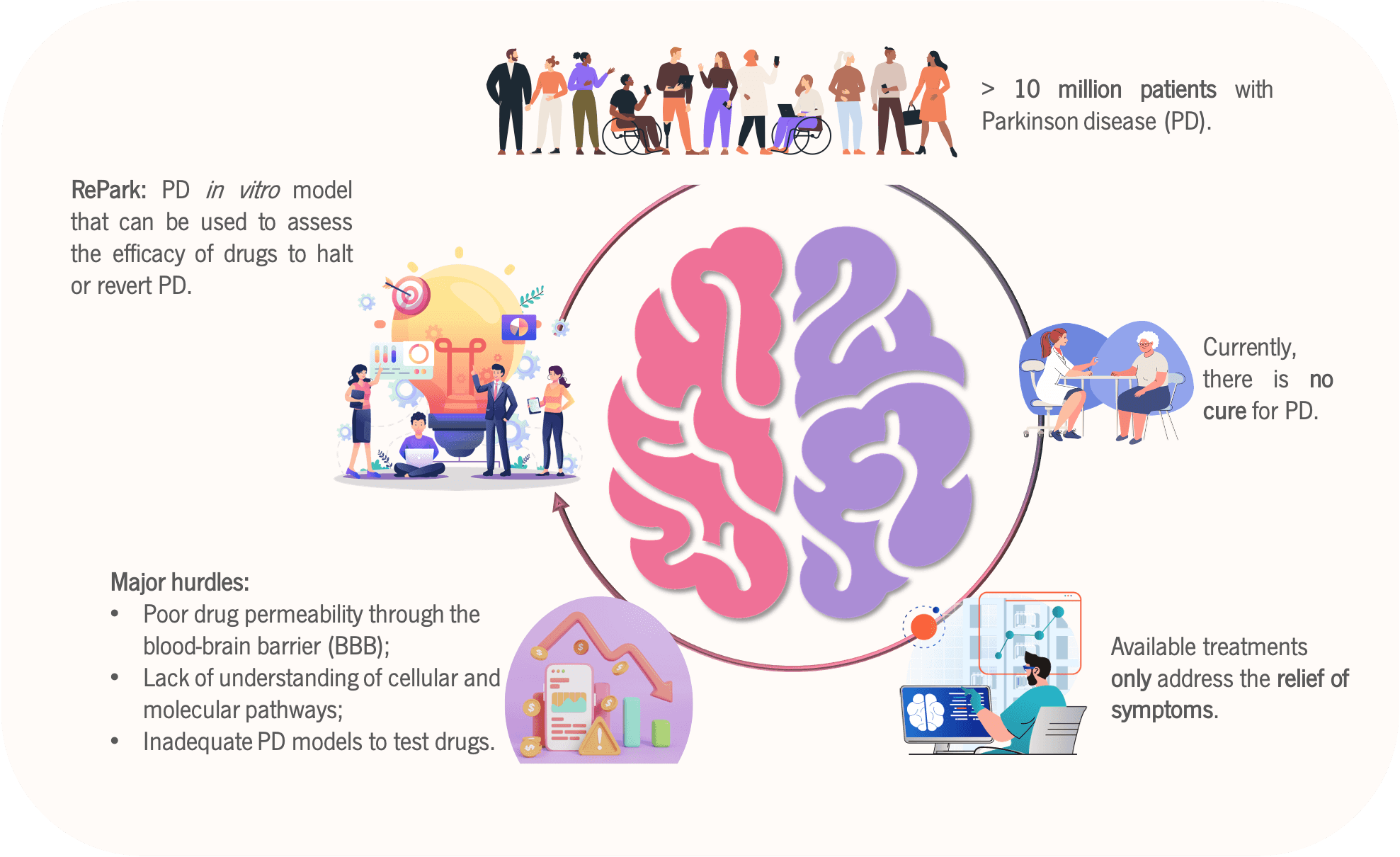
Concept
The development of the model is a multi-step process that will start with the formulation of supramolecular hydrogels (combining peptide and carbohydrate amphiphiles) able to mimic the extracellular matrix (ECM) present at the PD-specific brain regions. The PD-like in vitro cellular model will be generated using human induced pluripotent stem cells (iPSC) differentiated towards midbrain DA neurons and encapsulated in conjunction with iPSC-derived microglia into the ECM-mimics. In a complementary/alternative approach we will apply brain organoid technology to mimic PD hallmarks. The model will be complemented with a BBB mimic to assess the ability of drugs present in the blood to cross the BBB, as well as their efficacy to revert/halt the progression of PD. The use of such platform will contribute to the discovery of drug leads that can minimize the effects of ageing, in particular the PD impairments while ensuring healthy lives.
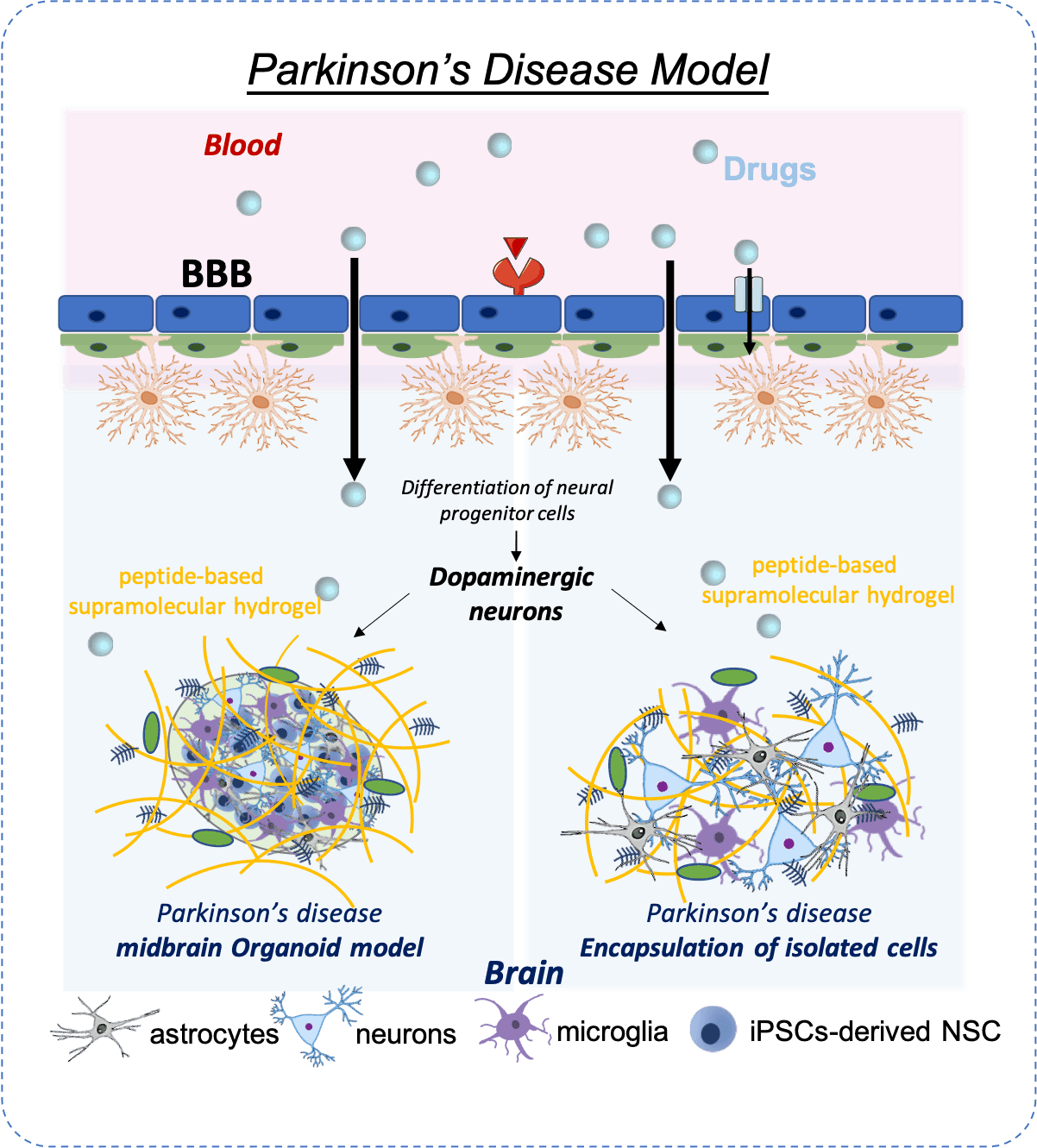
Expected Impact
RePark comprises a series of specific objectives that will be achieved throughout the development of the complete BBB-ECM-PD model, namely::
- i) Mimicking the blood-brain-barrier and PD extracellular environment
- ii) PD cellular mimics by encapsulation of individual cells or organoids
- iii) In vitro PD model combining the developed cellular, ECM and BBB mimics
- iv) Validation of the PD in vitro model with drugs of known efficacy
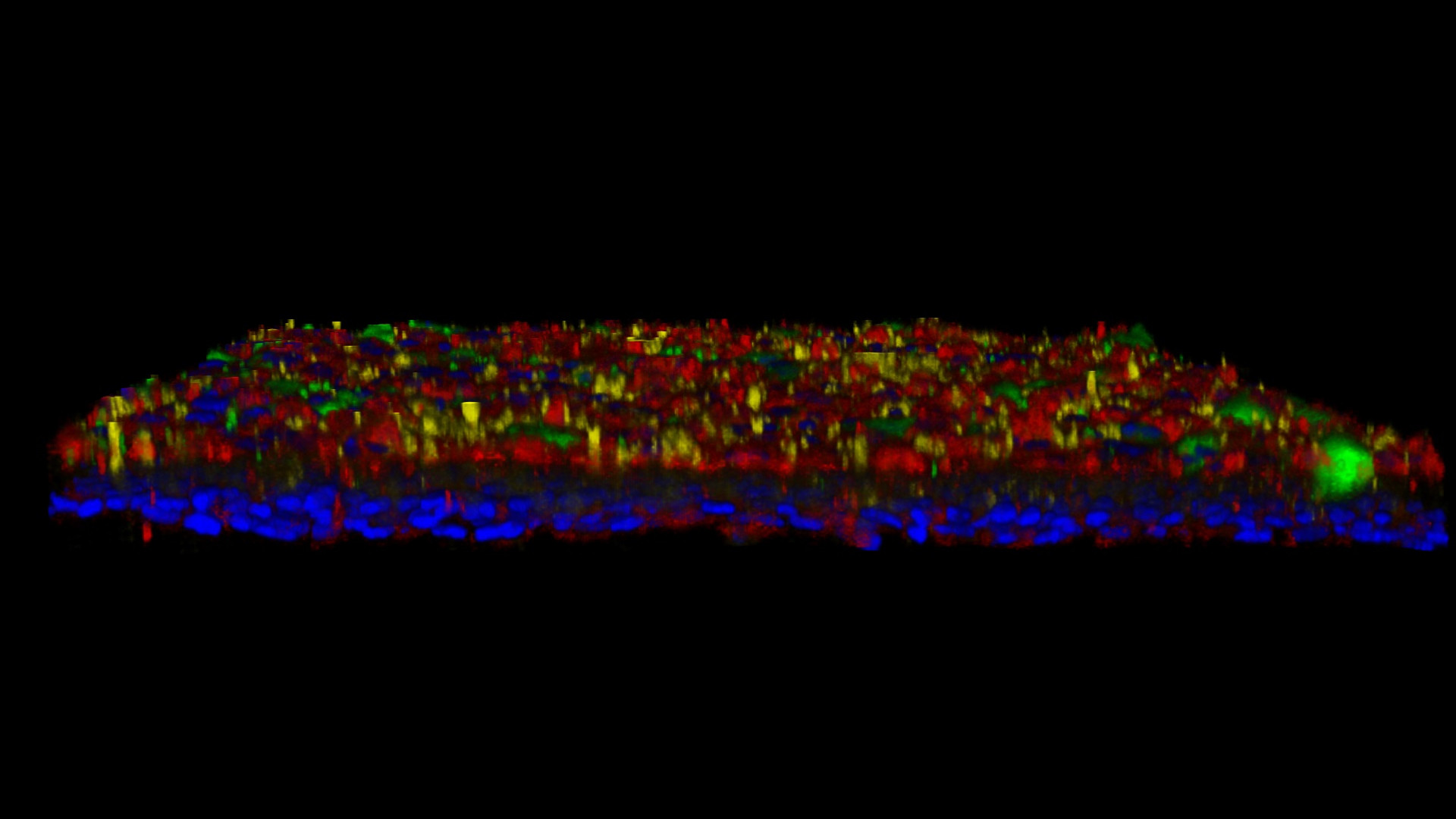
News
Publications
Amorim, S., Reis, R.L. and Pires, R. A., “In-vitro glioblastoma model: hyaluronan as a key player of cancer invasion and metastasis” ESB 2023 Conference, Davos, Switzerland
Castro, V. I. B, et al., “Self-assembling glycopeptide hydrogels for neural differentiation”, ESB 2023 Conference, Davos, Switzerland
Consortium
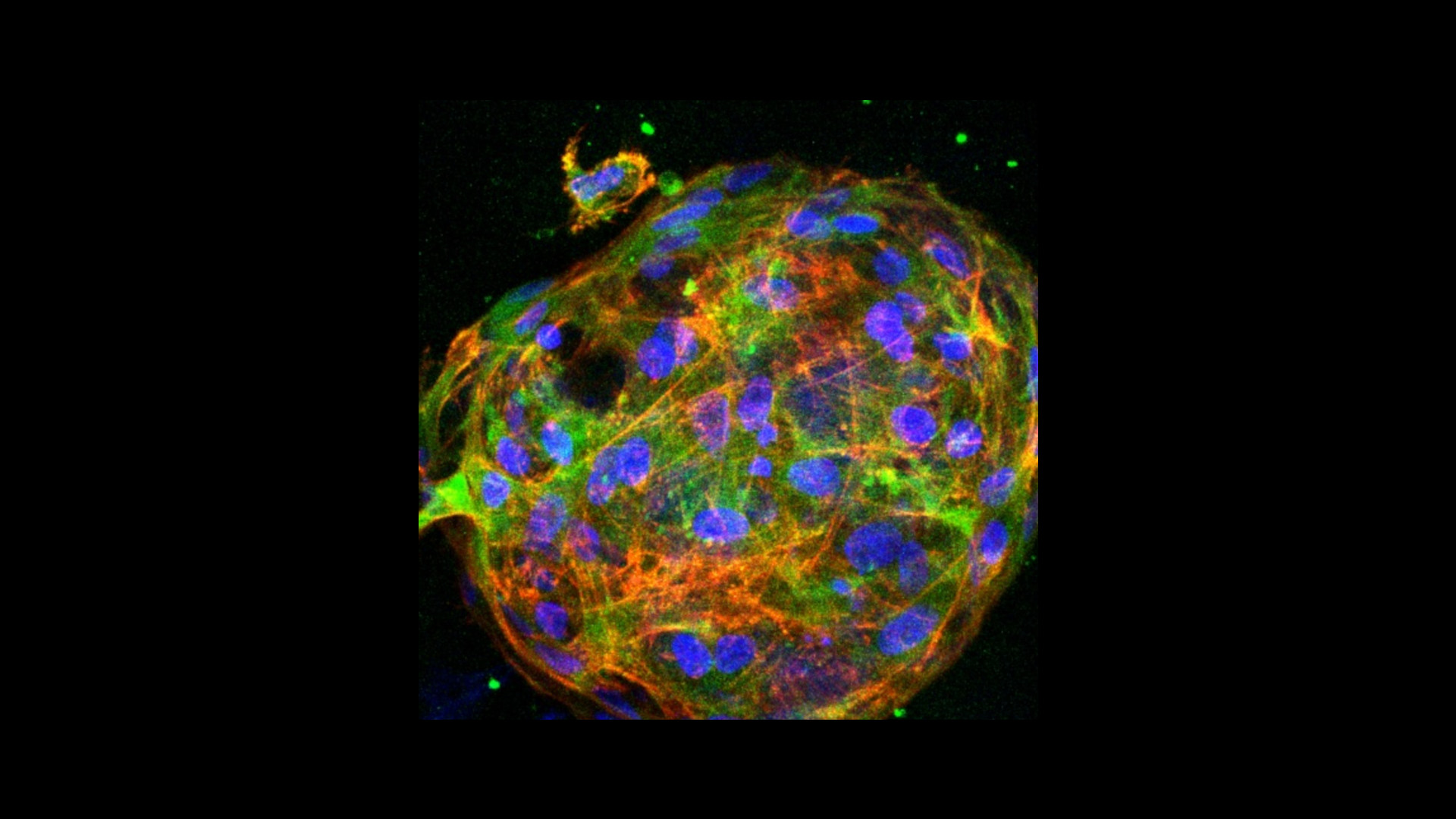
![]() The REPARK project has received funding from the European Union's Horizon 2020 Research and Innovation programme, under the Grant Agreement Number 810850. This website reflects only the author's view and the Commission is not responsible for any use that may be made of the information it contains. M-ERA.NET 3 has received funding from the European Union’s Horizon 2020 research and innovation programme under grant agreement No 958174.
The REPARK project has received funding from the European Union's Horizon 2020 Research and Innovation programme, under the Grant Agreement Number 810850. This website reflects only the author's view and the Commission is not responsible for any use that may be made of the information it contains. M-ERA.NET 3 has received funding from the European Union’s Horizon 2020 research and innovation programme under grant agreement No 958174.
Copyright © 2023 H2020 RePark Project || 3B's Research Group in Biomaterials, Biodegradables and Biomimetics
